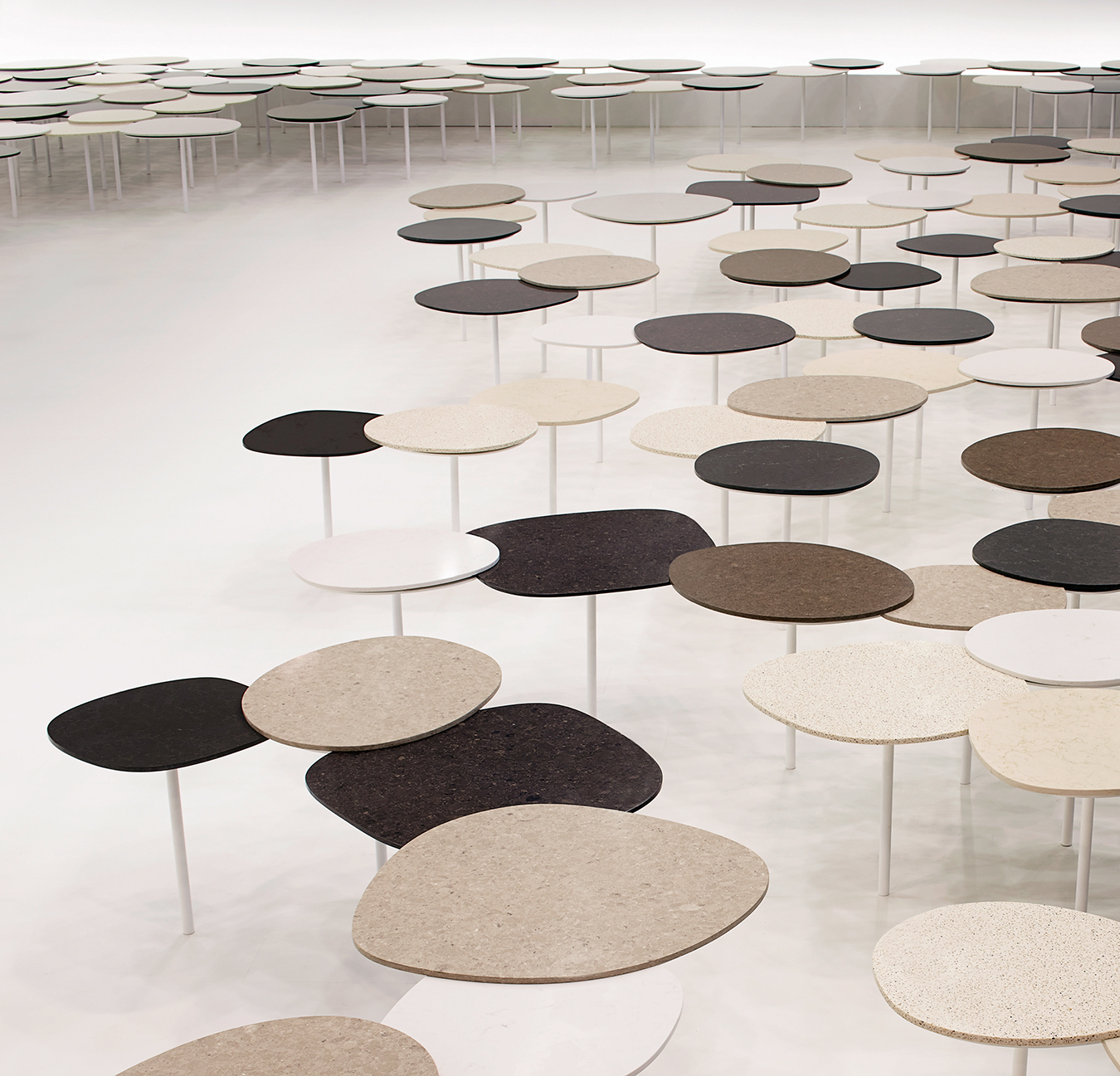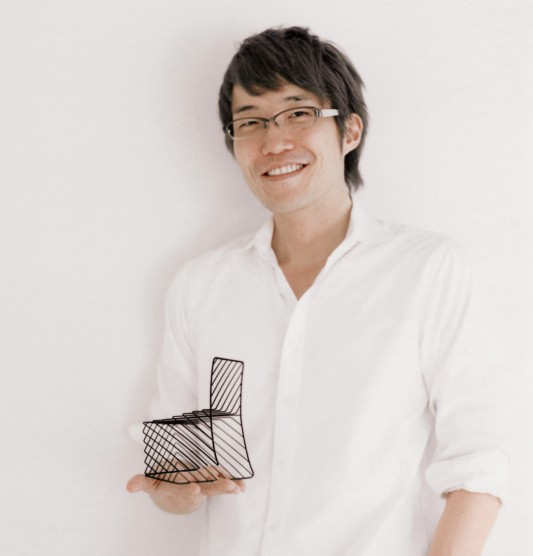An Oki Sato Quartz Garden
Hail, Caesarstone.

Stone Garden, an installation created by Oki Sato, in collaboration with Caesarstone, of quartz table-like surfaces clustered together to form a seemingly floating landscape.
Every so often, you meet someone who seems to operate on a different plane, like 35-year-old designer Oki Sato. Sato says the sort of witty yet poignant aphorisms you could imagine coming from Andy Warhol.
“At lunchtime, I go to the same restaurant. I have the same bowl of noodles,” says Sato, in Toronto for the Interior Design Show (IDS). “I go to the same café. I have the same cappuccino. It’s a boring life. I’m a boring person, but that helps me in the way I design. When you keep on continuing to do the same thing every day, you notice small differences.” (Warhol himself once proclaimed, “I like boring things,” and, “I like to be the right thing in the wrong place and the wrong thing in the right place.”)
Sato, it seems, was the right thing in the wrong place. It was 2002, and he was living in Tokyo, having just earned a master’s of architecture. Feeling stilted by the strict and rigid shortcomings in his field of study, he decided to visit Milan’s Salone Internazionale del Mobile furniture fair for inspiration. The trip resulted in an epiphany that eventually had far-reaching implications for the Toronto-born, now Tokyo-based designer.
“Everyone was designing so freely and was so happy—I felt the future of design,” he says. “Me and my friends said we would like to be exhibitors, not visitors, and that’s how we started [our company] Nendo.” Today, that very company is a multidisciplinary design firm with a sister office in Milan and whose portfolio encompasses works of architecture, industrial and graphic design, interiors, and furniture. Sato acts as Nendo’s chief designer, and he has further expanded his repertoire, working on an eclectic range of products including bowls, shoes, and chairs for notable brands such as Louis Vuitton, Camper, and Coca-Cola.

Oki Sato, chief designer for multidisciplinary design firm Nendo.
The word Nendo means “free-forming clay, like Play-Doh,” says Sato. The name “is all about flexibility and freedom,” which is key when “solving design problems.” Sato eschews the notion of beauty for beauty’s sake in art as pure malarkey: “Every product has a mission, and we have to solve that.”
For example, late last year Nendo turned a shipping container into a Starbucks pop-up shop in Japan; the store, a kind of curated coffee shop meets library, was open for three weeks. The project went like this: Nendo’s designers filled the space with books bearing nine different-coloured covers to correspond to the beverages being served. A consumer could read about a latte, for instance, then trade the book jacket, which could also be attached to a takeaway tumbler, for the drink. “I’m always interested in the story behind the product,” says Sato.
When Sato was approached by Caesarstone, primarily known for its slick quartz countertops, “I asked them, ‘What’s so different about your product compared to the others?’ ” he recalls. “They said it’s much more rigid, it’s much stronger, and the surface is scratchproof—it’s very, very hard.” Sato wanted to showcase the Caesarstone product in a different light, so he created an installation called Stone Garden using Caesarstone quartz tabletops to form a calming cluster “garden”. A single metal leg stems from each quartz piece, and the group of “stones”—approximately 200 table-like elements made from seven different quartz surfaces and nine varying colours—is secured in place by way of an overlapping design.
The result is serene and minimalistic, as is the installation name, which is an homage to Japan, a country linked to such perfectly composed landscapes. “I wanted [the viewers] to feel the character of the material,” he says. “If I made a big kitchen or a big table or something like that, somebody is going to have to explain it’s very strong. But I wanted to make something you wouldn’t have to explain, so I thought about having these really small tables with one leg.”
The work evokes many images of nature—a field of floating mushrooms on wiry stems comes to mind. The installation, as the designer promised, is as un-kitchen-like as it comes. (As a result of the success garnered at IDS, Stone Garden went on to Palazzo Crivelli in Milan as part of Fuori Salone.) Against the white background, the tables seem to undulate and take on an ethereal, otherworldly quality—not unlike Sato himself.




